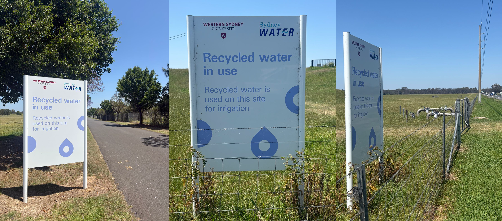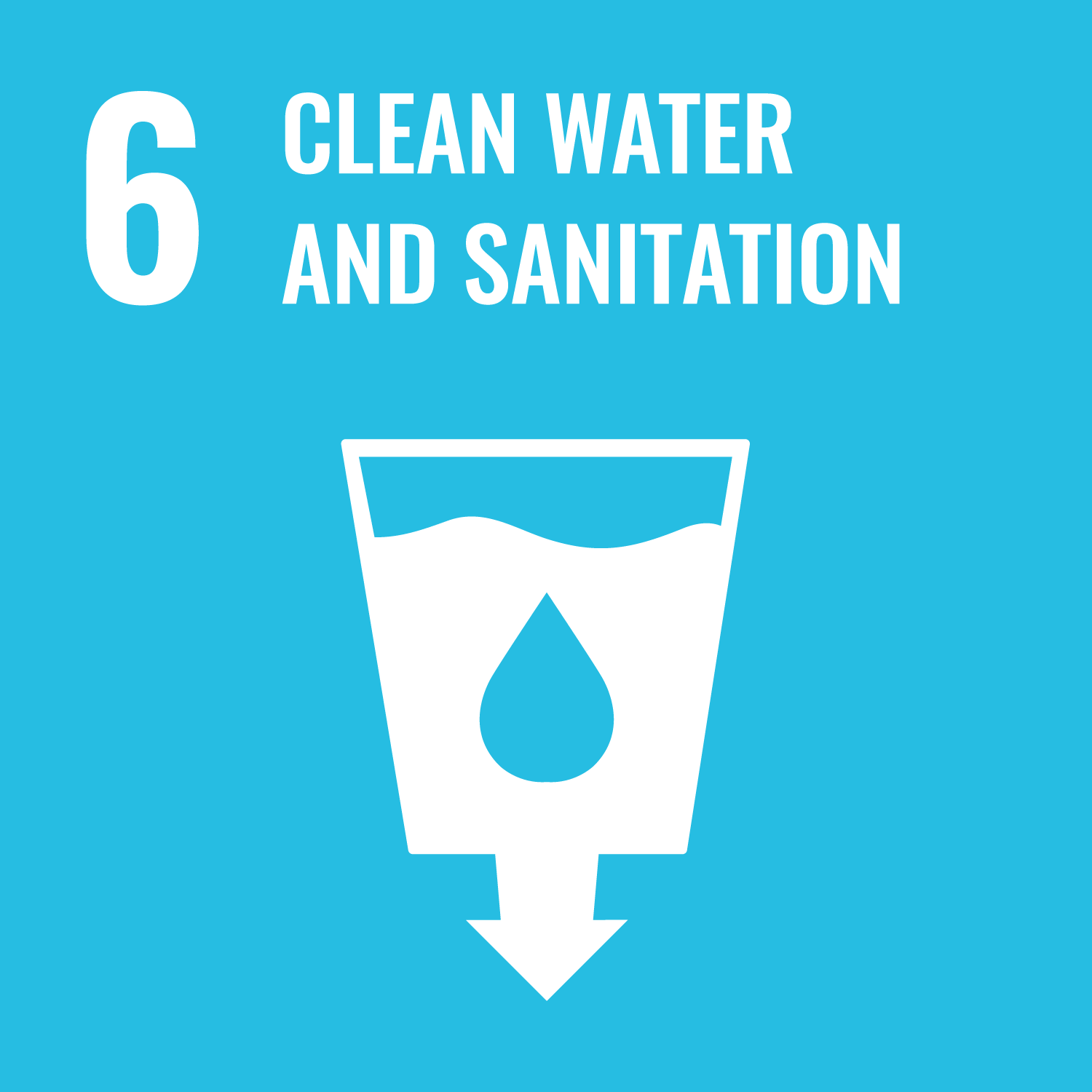Promoting Water Saving on campus

As part of our Water Sensitive Urban Design (WSUD) processes, our active water conservation efforts are supported by:
- visible public signage campaign
- promotion of our tracking and management via our internal communication channels
- annual sustainability reporting and dissemination to all staff and students.
Targeted, effective signage is a proven and efficient public communication strategy to increase awareness and promote conscious water usage to large numbers of people.
Promoting recycled water and stormwater harvesting irrigation
Over 5O% of our water usage is from recycled and stormwater harvesting (see water re-used in our performance data). This water is deployed across our campus network to irrigate our playing fields and gardens. As secondary treated water there is signage across all our campus to foster awareness and ensure public health and safety. The water is safe for irrigation but is not of drinking water quality under Australian standards.
Water refill stations
Our network of campus water refill stations (locations are shown on campus maps) promote water conservation and plastic waste reduction and make water freely available to the campus community. These permanent fixtures support and encourage water conscious behaviour as a social norm and habit.
Did you know?
- it takes approximately 3 litres of water to produce a 600 ml plastic bottle
- bottled water waste is excessive – in Australia there is approximately 100 million empty plastic Polyethylene terephthalate (PET) bottles disposed to landfill per annum and
- it takes up to 1,000 years for a PET bottle to degrade in a landfill environment.
Recycled Sydney Water – Paddock irrigation
Recycled water is provided from the Sydney Water Recycled Water plant, which is used in low throwing pivot irrigators on Hawkesbury Farm for fodder production, along with further treatment before irrigation of the main campus oval.
This ongoing program is supported by highly visible strategic large roadside and campus signage that is viewed by thousands of community and staff at the Hawkesbury Campus each day.

Target | |
| 6.3 | By 2030, improve water quality by reducing pollution, eliminating dumping and minimizing release of hazardous chemicals and materials, halving the proportion of untreated wastewater and substantially increasing recycling and safe reuse globally |
6.4 | By 2030, substantially increase water-use efficiency across all sectors and ensure sustainable withdrawals and supply of freshwater to address water scarcity and substantially reduce the number of people suffering from water scarcity |
Mobile options:

